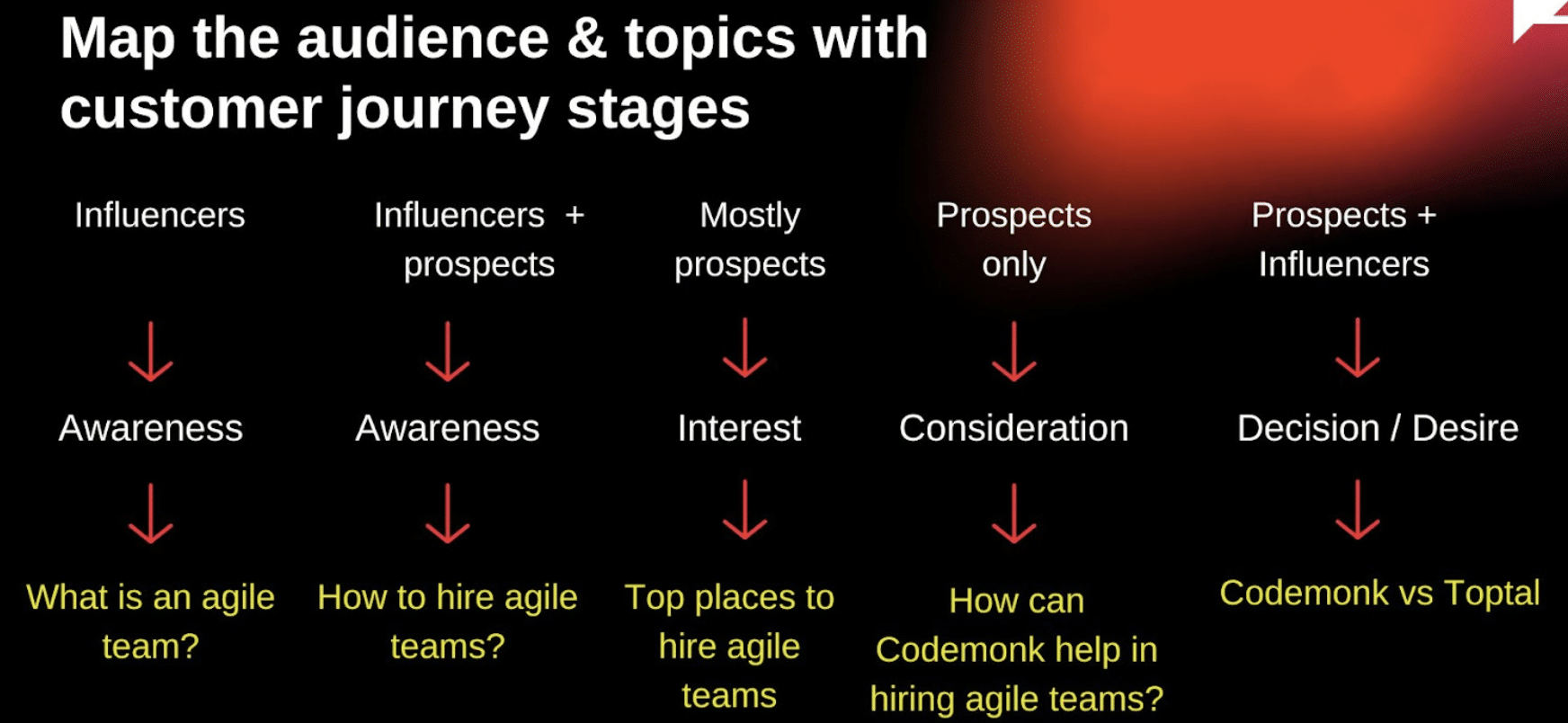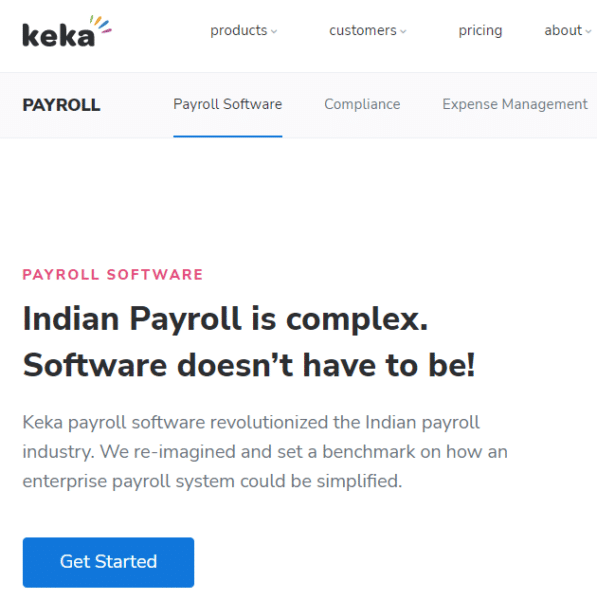“We’re at around 100,000 monthly organic traffic, but we cannot sustain the SERP positions and conversions…”
“We are at 530,000 monthly organic traffic, but our growth has become stagnant and we’re unable to scale up…”
I hear plenty of similar SEO concerns from SaaS companies. After working on numerous audits, I found that most of them struggle with SEO issues that impact their customer acquisition costs and diminish revenues.
1. Branded terms have more visibility
Many SaaS websites get considerable branded traffic but minimal visibility for non-branded search.
Even unicorns from fast-growing regions, such as the U.S., UK, and India, struggle despite more branded traffic.
For instance, blockchain.com has ~911,500 monthly organic visits per Semrush:

But looking at branded vs. non-branded traffic tells a different story.

The same pattern can also be seen with Monzo.com.

Out of ~656,500 organic search traffic monthly, 94.4% is branded, and only 5.6% is non-branded.

Driving branded traffic is great if you’re already popular through funding and performance marketing which result in valuations.
By ignoring non-branded terms your searchers use, you’re losing customers to competitors. Missing such opportunities can be prevented when both non-branded and branded traffic is prioritized.
Sadly, most SaaS companies only realize the importance of organic growth when it’s too late.
2. Flawed SEO content strategy
Before investing in SEO, most SaaS product marketing teams will start creating content based on the customer journey stages.

Yet, they mostly focus on creating Consideration and Decision content while overlooking Awareness and Interest stages altogether.

This type of content often revolves around branded terms that help with performance marketing and email outreach – but not SEO.
Product marketing teams have metrics to chase, and this content approach supports that.
They want to get MQLs (marketing qualified leads) and SQLs (sales qualified Leads) faster to achieve their MRR (monthly recurring revenue) and ARR (annual recurring revenue) targets.
But when you invest in SEO, the purpose is not just getting more MQLs and SQLs, even though your clients or bosses want them.
Though top management wants leads from the organic channel, they need to know their KPIs differ based on the strategy used.
Growth advisor Gaetano DiNardi offers tips on breaking down traffic sources and their purposes:
Break it down like this:
1. Demand Capture – Paid Search / Affiliates
2. Demand Capture – Pricing Page / Demo Request
3. Education / Exploratory – Main Website Pages
4. Education / Exploratory – Blog & Resources
A SaaS website’s main purpose is to generate visibility on the search engines for the queries the customers search. This can only happen by targeting the right queries.
If your ideal customer is not searching for [Your product name + feature benefits], you won’t get any visibility through the search engines.
Your content strategy for SEO needs to target the queries and topics that at least fall under the Interest stage if you’re not interested in driving Awareness stage people to the website.
3. Unsustained content value
Recently, I spoke to two start-ups that already have an extensive content library or resource. Yet, it has become a bottleneck for scaling organic growth.
How? They have written a lot of blogs, but only a few perform well organically.
What might have been the issue?
When writing and publishing a lot of content without appropriate review and analysis, the content value is not sustained across all the content.
I’ve seen SaaS marketing or SEO teams excited about targeting to publish 40 to 60 articles a month. At such a scale, content quality control might suffer.
That’s why I recommend a thorough content review process that looks at the following:
- Requirements: Was the content delivered according to the brief?
- Contextual intent: Does the content have the right context? Does it serve the user intent?
- Brand messaging and promotional review: Are the brand and its products/services positioned with the right messaging throughout the piece?
Now, with ChatGPT becoming stronger, you would anyways need to have an editor in place.
Putting much content out to scale up is fine, but the results will never sustain if it offers less value than your competitors.
4. Focusing on creativity over SEO
Another significant challenge with SaaS SEO is that the product marketing team needs creative punchlines to attract the crowd.
For example, look at the super fantastic headline written by Dyte.io.

Well, it’s a video streaming SDK provider. Their developer or CTO audiences can understand SDK, but because punchlines are catchy and attractive, they use them as headings.
Let’s take another example of an amazing headline from Adapt.io.

They’re the sales acceleration platform that provides intelligent buyer analytics for proper targeting.
Nothing wrong there, but it’s missing out on helping users and search engines understand what exactly they do through the headline.
Google’s SEO Starter Guide maintains that you should use heading tags to emphasize important text.

Google’s documentation on Headings and Titles also suggests writing document titles based on the document’s primary purpose.

Let’s take the example of the largest SaaS platform from whom many of our clients inspire, Salesforce:

They have mentioned what they are as their headline.
Let’s take another example of a popular HR payroll platform, Keka:

Not just the readers but search engines can understand what this platform is all about.
You need to learn how to help search engines understand what you are and what you do so that they can put you in front of your customers for the correct queries at the right time.
So creative punchlines are great for performance marketing, but balancing them with the correct queries can take you to heights, even in SEO.
5. Decaying content
Extensive content libraries often suffer from content decay, a continuous but slow decline in the content’s impressions, clicks and traffic.
So when you keep publishing new content, you need to remember the ones published in the past. When they’re no longer valuable to the audience, search engines may take the content off the SERPs for many queries.
Publishing content is only 20% of the task. The rest is optimizing it to own featured snippets.
6. No content optimization plan in place
Once the content is written and published, the team needs to remember to monitor whether they perform.
And this is not just the case with SaaS companies but many companies across various segments that rely on heavy content pipelines for SEO.
They only create blogs to drive value to the commercial-intent pages. If those blogs are bringing that value, it’s good. Otherwise, the focus should be on creating new content.
But when you don’t optimize the content periodically:
- You can’t maximize the content ROI because all content that you publish doesn’t drive traffic or conversions.
- You miss the opportunities of having different touchpoints to bring the target audience to the website.
- If you add filters to your target audience or change your brand positioning and don’t update them on all the content, you struggle with consistent brand messaging, which can confuse your target audience.
7. Keyword cannibalization
Keyword cannibalization is also a big issue among SaaS websites.
For example, these topics can create keyword cannibalization for a VoIP softphone app:
- What is a Softphone? Why Do You Need It?
- Softphone: Definition, Benefits, Challenges, and More
- The Importance of a Softphone
- 6 Advantages of a Softphone
When you write the first topic, you're exclusively covering the definition of a softphone and its benefits in detail.
And now you know that is what the second and all the other topics mean.
In this case, you feel the first blog has the below target queries:
- What is a softphone?
- Reasons you need a softphone
And the second one has:
- Softphone definition
- Softphone benefits
- Softphone advantages
- Softphone challenges
The intent of someone reading the first two contents is the same. And hence, the target queries are also the same. They are just semantically connected.
The topics may seem distinct, but the audience, context, and queries remain the same. In reality, only the titles differ.
To address this, you can either merge both articles and delete the one that is underperforming or has little value.
8. Underutilizing internal linking
Internal linking on the SaaS websites happens in two ways:
Putting too many ‘Read more’ sections between paragraphs
Even if you add them contextually after a few paragraphs, it brings interruption while reading. Adding them within the sentences using the correct anchor text is better to deliver a better user experience.
The “Read More” section should be used when sharing an extended version of the discussed topic.
Failing to link the high-end anchor text mentioned in the content
All content gets published just while looking at the query for which the content was written.
For example, if the content is about “How do HR management systems work," the links would be given to all the blogs and landing pages around HR but not to the Payroll page, even if that was used in the content somewhere.
Below is the internal linking sheet for one of our clients:

This is also a content optimization mistake that can diminish your content’s value.
As Google's Starter Guide suggests, the anchor text should help users and search engines understand what the page is about.

Cyrus Shephard's latest study on Google's Selective Link Priority suggests wisely choosing your text and image anchor.
Building an internal linking structure before aggressively creating content can maximize SEO ROI.
9. Blindly copying competitors for backlinks
Most clients I’ve spoken to want all their competitors' backlinks – even if their own site already has ~600,000 monthly organic visitors.
“My competitor has captured the backlink from Amazon. We need it!”
Well, not really. Just because your competitor earned that backlink doesn’t mean it's relevant.
They might have gone after irrelevant backlinks. Should you also do it?
It’s should not be about blindly copying someone else’s strategy. Carefully analyze your competitors’ backlinks and identify which are the most relevant.
This helps you avoid putting efforts in the wrong direction and wasting resources that could’ve been well-spent elsewhere.
10. Not enough or zero content distribution
Because growth needs to happen fast for SaaS businesses, SEO needs to pick up the pace. The downside is that content distribution becomes an afterthought.
Your work doesn’t end with publishing content. You should have a distribution strategy in place.
SEO cannot play alone in the game of marketing and business.
You need to think of “remarketing SEO” that focuses on what you can contribute to search, be it people, platforms, or SERP presence.

SaaS content can be repurposed, redistributed, or syndicated to ensure your efforts drive the expected results. In short, the content ROI is maximized.
SaaS SEO must be a careful and strategic investment
For SaaS companies, focusing on performance marketing and outbound lead generation strategies is expected.
But when done right, SEO has the capability to reduce your customer acquisition costs and maximize marketing ROI dramatically.
The post 10 SEO challenges faced by fast-growing SaaS companies appeared first on Search Engine Land.
from Search Engine Land https://ift.tt/ZRXqtrV
via
No comments:
Post a Comment